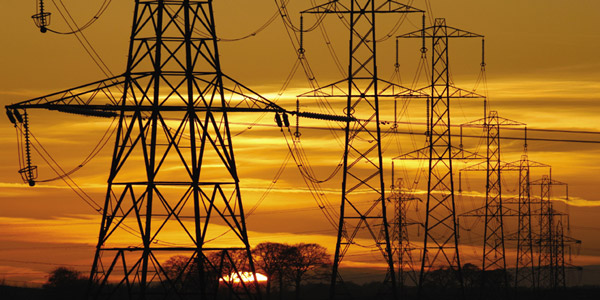By Robert Mullin
CAISO has issued a draft final proposal to prevent smaller transmission owners from bearing the high costs for network upgrades needed to interconnect generation serving load outside of their service territories.
While the latest revision keeps its focus on the specific circumstances faced by Valley Electric Association, it would also provide CAISO the flexibility to apply the proposal’s principles to similar TOs seeking entry into the ISO in the future.
The most recent, and likely final, proposal settles on one of two plans spelled out in the last iteration, with some refinements. (See CAISO Refines Small Generator TO Interconnection Plan.)
That plan (referred to as “Option A”) would require CAISO to determine on a case-by-case basis whether a candidate TO should be allowed to fold low-voltage generator interconnection costs into high-voltage transmission revenue requirements. Doing so would diffuse the costs among the ISO’s full rate base to avoid saddling small TO ratepayers with outsized fees.
Under the proposal, CAISO will make its determination based on whether the TO is:
- Very small relative to other TOs, with a gross load of 2 million MWh or less (currently about 2.2% of the load of the ISO’s largest TO);
- Located in a renewable resource-rich area gaining “elevated” interest for generator procurements; or
- Not subject to a renewable portfolio standard or does not need the new interconnecting generation to meet that requirement.
CAISO rejected a more “formulaic” Tariff-based “Option B” that included the last two provisions but would have had the Tariff specify that a small TO’s gross load be no larger than 5% of that of the largest TO.
“Rather than trying to develop Tariff provisions that could address every potential unique circumstance, this [Option A] proposal specifies guiding principles the ISO would apply on a case-by-case basis to alleviate unintended adverse impacts for each unique” participating TO, CAISO said.
The option would require ISO management and staff to apply the principles to determine the “appropriate treatment” of each small TO and then seek approval for its recommendations from the Board of Governors and FERC.
CAISO dismissed the contention of some stakeholders who preferred Option B out of concerns that a case-by-case review could bog down the interconnection process.
“The ISO does not agree with the argument that Option A would cause delays since any ISO decision and subsequent FERC approval could be combined with the [TO] application process when a new [TO] joins the ISO,” CAISO said.
Valley Electric, CAISO’s only out-of-state member, serves 45,000 customers and about 100 MW of load in a 6,800-square-mile region along the California-Nevada border. The cooperative last year agreed to sell its 230-kV transmission network to GridLiance for $200 million. (See Valley Electric Approves Sale of 230-kV Network to GridLiance.)
The utility’s service area has high potential for the development of new renewable resources that would serve more populous areas of the ISO. Two projects with a total capacity of 100 MW await interconnection with the Valley Electric system, with more slated to enter the queue, according to the ISO.
Under CAISO’s Tariff, a TO must reimburse its generator interconnection customers for the costs of local reliability and deliverability network upgrades necessary to connect a resource to the transmission network. The TO can then seek regulatory approval to roll those reimbursement expenses into its rate base, passing them on to ratepayers through either a high-voltage or local low-voltage transmission access charge (TAC). The ISO considers any line under 200 kV to fall into the latter category.
While the high-voltage TAC is allocated to all ISO ratepayers at a postage-stamp rate based on the total revenue requirements of all TOs owning high-voltage transmission, the low-voltage TAC is charged only to customers within the service area of the TO owning the facilities.
That arrangement could burden ratepayers in low-population service areas who are forced to bear the low-voltage network upgrade costs for generation intended to serve other locales attempting to meet renewable goals.
CAISO has scheduled a Feb. 13 conference call to discuss the proposal and is asking stakeholders to submit comments by Feb. 22. ISO management seeks to present a plan for board approval in March.





